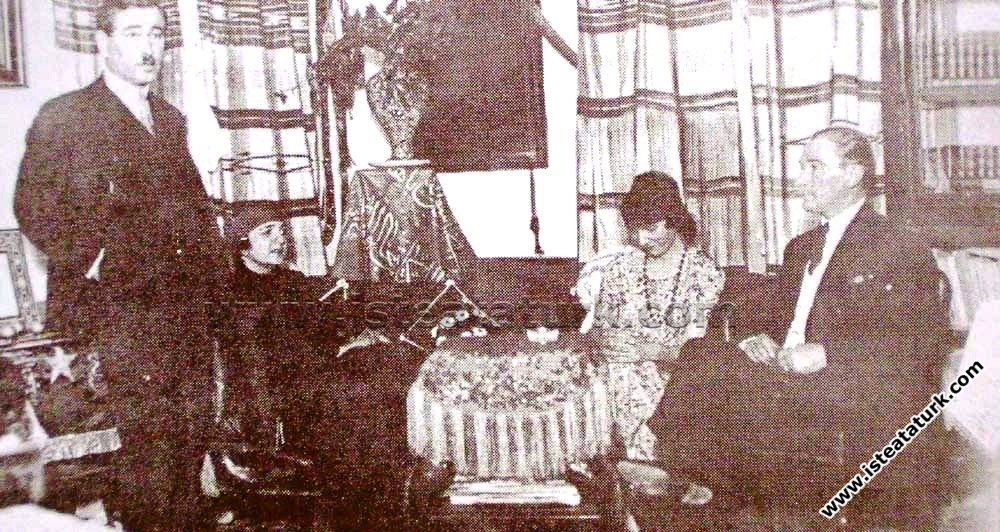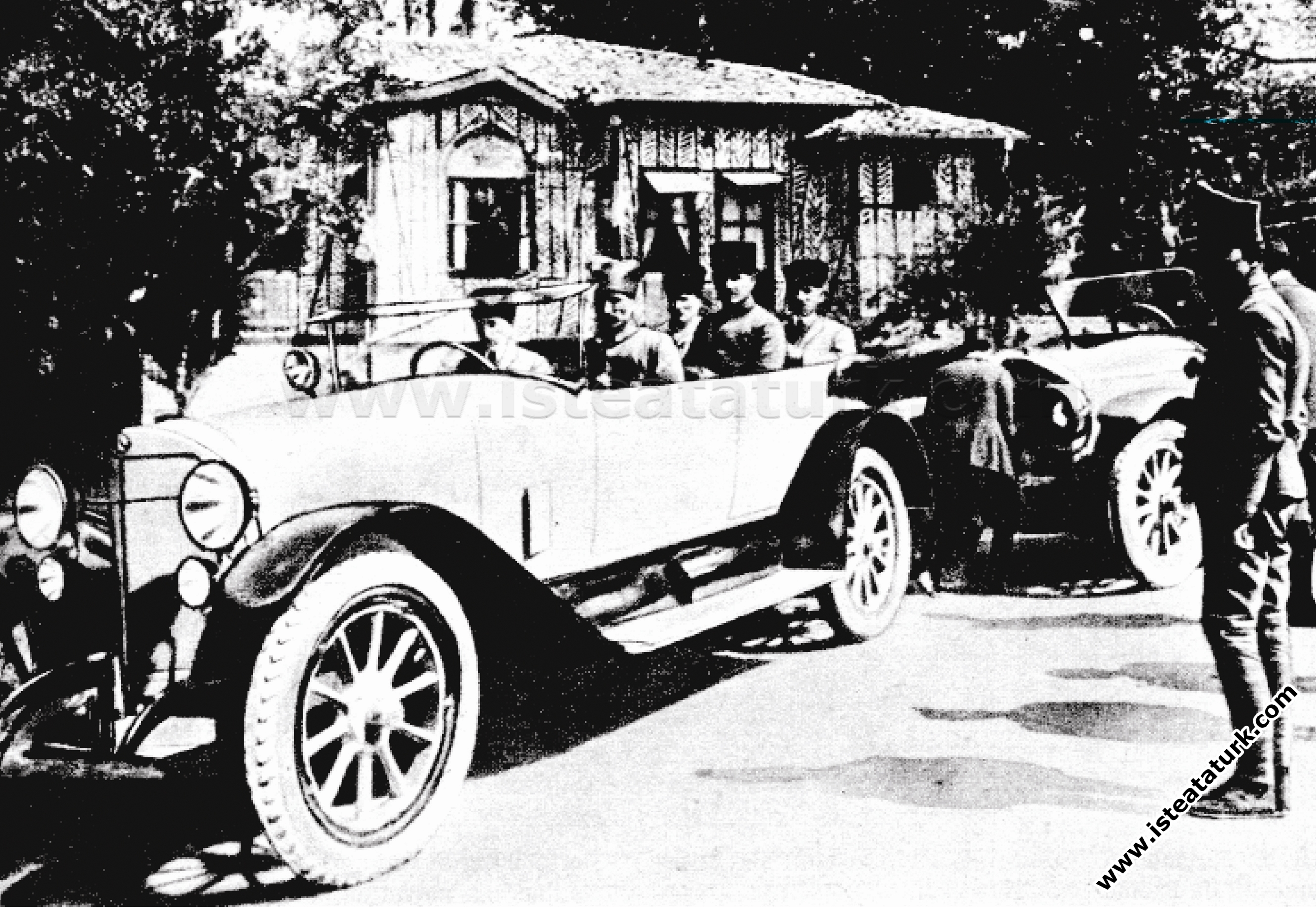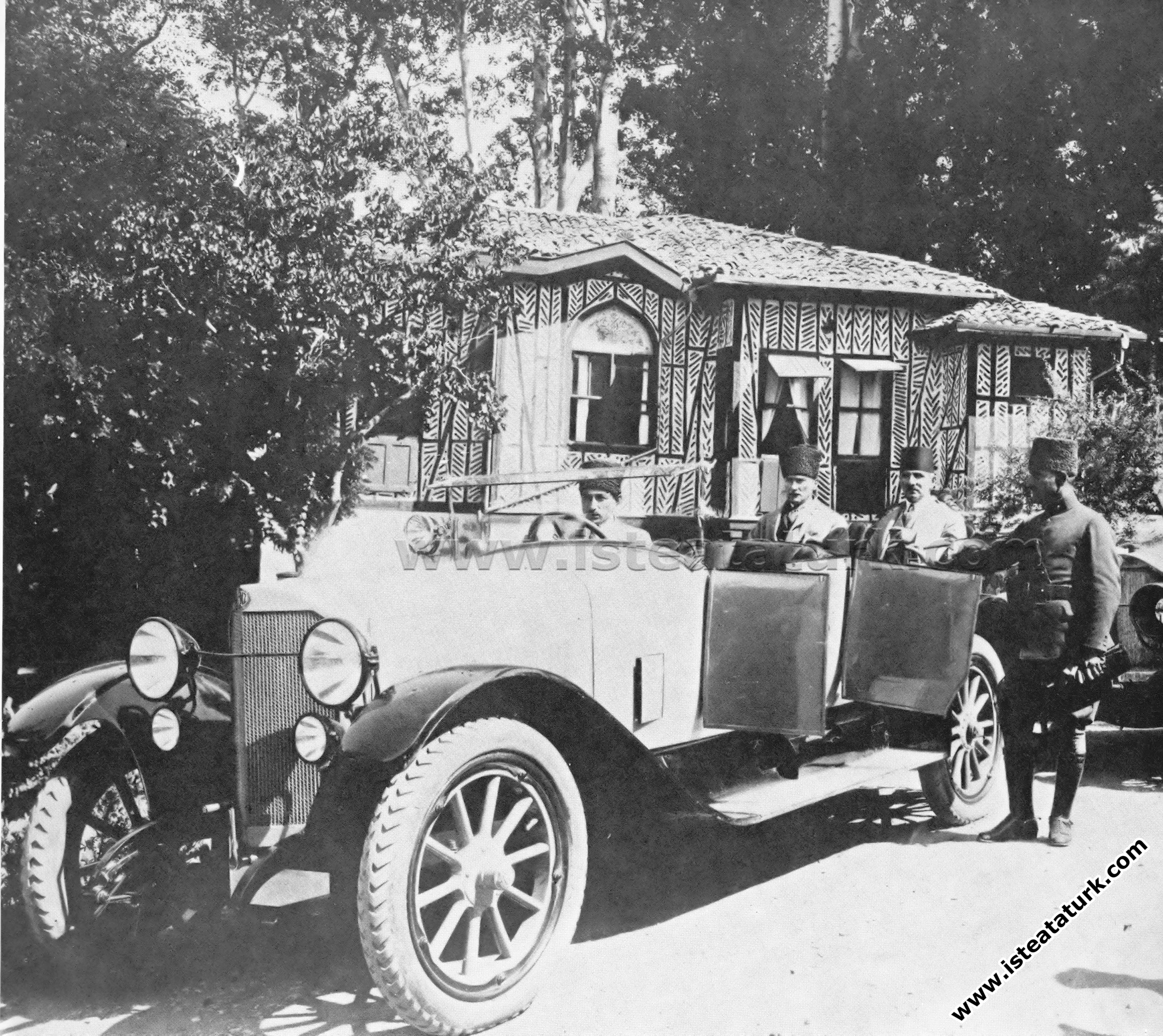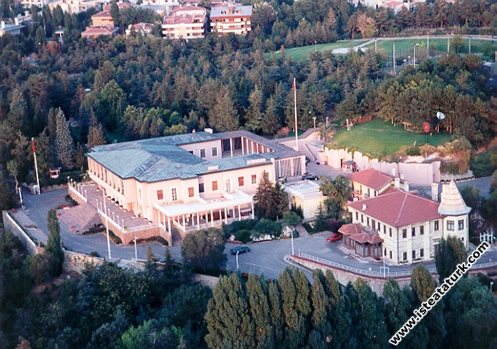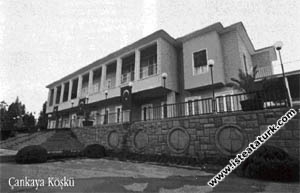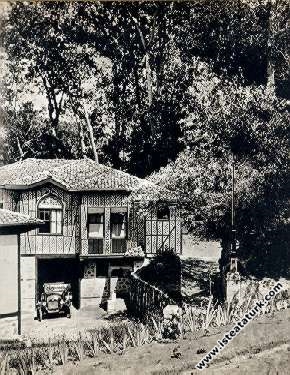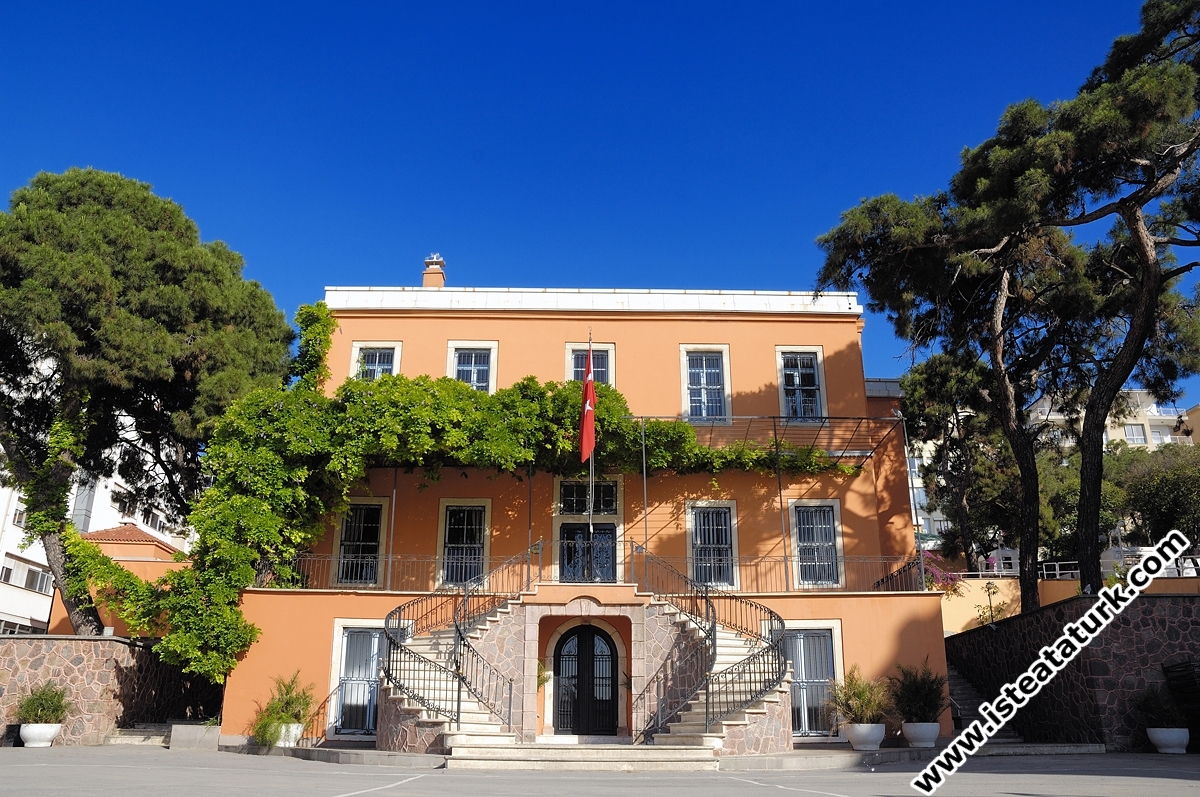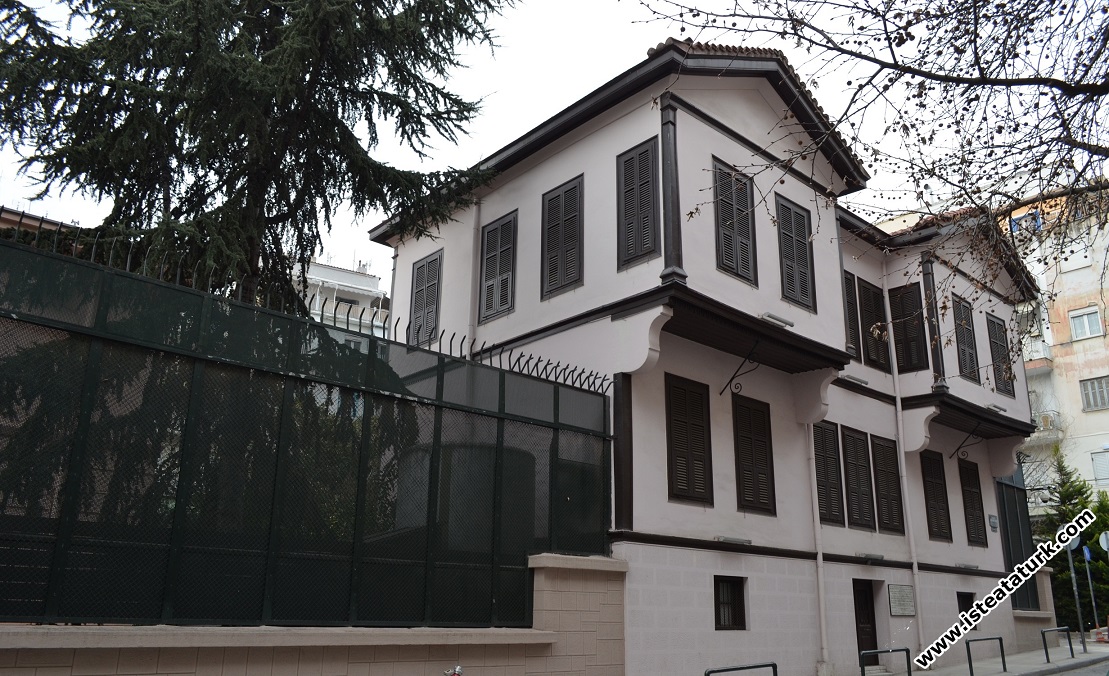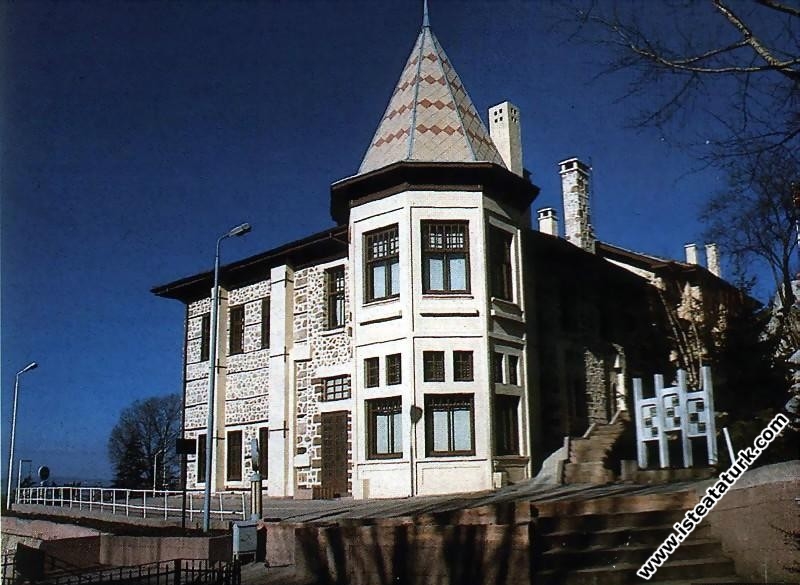
Ankara - Çankaya Mansion Museum
Character Size
Atatürk's Place Çankaya Mansion Museum
Atatürk's Place Çankaya Mansion Museum
Who would have thought that a vineyard house built in the late 1800s in Ankara's Çankaya village would witness history and serve as a residence for a world-class leader who changed the fate of the country?
From the date he came to Ankara on December 27, 1919 until 1921, he first resided in the Agricultural School, and after he was elected as the Speaker of the Grand National Assembly of Turkey, in the stone building at the Station, Atatürk settled in the vineyard house in Çankaya in June 1921. Today, at the entrance of the Museum Mansion, you can see the following lines about the building, which is the residence of Atatürk for the longest time in his 56-year life:
"It is an old vineyard house. It was bought by Bulgurluzade Mehmet and Rıfat Beys from Ankara, and it was presented to Atatürk on behalf of the people of Ankara under the leadership of Ankara Mufti Hodja Rıfat Börekçi at the beginning of 1921. Upon its transfer and renunciation by Atatürk on behalf of the army, the 'Army Mansion' In its original form, the building that took its name is a two-storey building with a marble pool in the downstairs hall.After a minor repair, they moved from their residence at Atatürk Ankara Train Station to this Mansion in early June 1921.
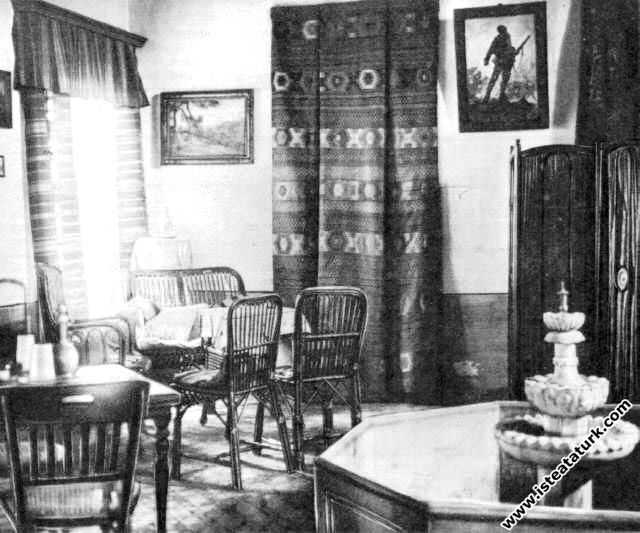
The room with the pool in the old vineyard house.
As soon as you step on the metal stone of the building, which was later turned into a "mansion" and furnished in a modest, yet tasteful and comfortable way, far from the grandeur of the great palaces, you suddenly find yourself in the 1920s.
While your brain and emotions are trying to adapt to this sudden journey into history, your body has already reached the hall. And from that moment on, you begin to live the history, you see the traces of Atatürk in every object, in every corner, and you start to place the whole mansion in your brain folds with the excitement of living that moment, with the expectation that you will come out of a door immediately. It should be noted right away that the billiard table standing in the middle of the entrance hall was in the hall of the upper floor when Atatürk lived in the Mansion, but was placed on the lower floor because it was too heavy to cause a collapse in the building.
The doors of the dining hall on the opposite, the green hall on the right, the door of the ambassador reception hall on the left and the stairs leading to the upper floor are inviting as if you understand your desire to get to know the Museum Mansion. There is a piano and a six-seat group in the hall. On the walls, there are 2 paintings and 3 photographs of Atatürk taken on various dates. The door in the middle of the three-entry hall has been closed and there is a billiards cabinet in front of it. Careful eyes immediately catch the beauty of the kilim curtains hanging on this door. It seems that the passing years have not affected the elegance of the curtain at all.
In the ambassador reception hall on the left side of the hall, there is a mother-of-pearl inlaid set consisting of 3 armchairs, 1 sofa, a desk and a cupboard, which was given to them by the Egyptian Khedive Abbas Hilmi Pasha, and a separate study desk on the left.
As soon as you enter the room, a feeling as if you are in the presence of Atatürk envelops your whole being. Along with some photographs in mother-of-pearl inlaid frames on the walls, a photograph on the desk draws people in. Above the photograph you read the following handwritten note:
"21.9.1935-On the carriage from Istanbul to Ankara." The green hall located opposite the ambassador reception hall; It is the reception and living room with seating groups, some photographs and a showcase. There is also a door to the dining hall.
Is it because almost all of us have read various memories about the meals given by Atatürk in Çankaya, you may feel like an early guest as soon as you enter the dining hall. The first thing that catches the eye in the hall, where furniture from the period is located, is the wood-carved fireplace with its chimney and sides, and the two stained glass windows on each side of the fireplace, located directly opposite the door to the hall. There is also a breakfast table for four in the dining room and a poker table by the green hall entrance door.
Two display cabinets, a sideboard, a console, two gramophones, and large tile vases on the fireplace and door sides are harmoniously placed in the living room, and the sets in the showcases and the buffet seem ready to use. In front of the sofa is a large silver brazier right in the middle.
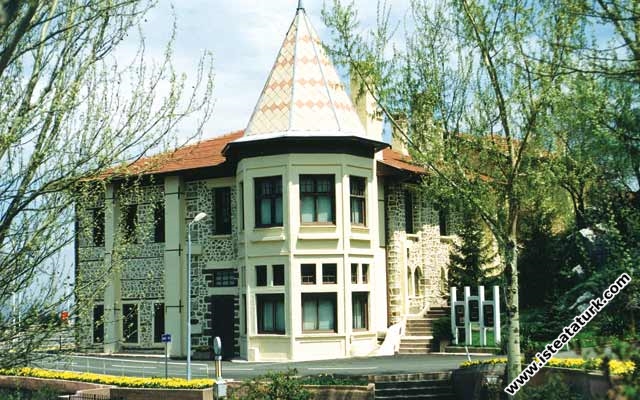
The latest version of Çankaya Mansion
On the door opening to the dining hall from the hall, Hüseyin Avni Lifiş's painting bearing the date of 1922, and above the door opening from the green hall, the painting of a crying woman with her signature written in old letters will catch your eye.
The lament for the martyr whose only belongings returned from the front rings in your ears. The stairs on the right as you exit the hall from the hall are a path leading to the special moments of Atatürk's life.
There are 6 doors opening to the "sofa" on the upper floor. One of them is the door to the sofa from the stairs. The door to the left of it opens to the bedroom, the door to the right opens to the rest room, the door facing the front façade opens to the balcony, and the door directly opposite opens to the library. In the middle of the sofa is an oval table (where the pool table used to be), a sofa and two armchairs, and two display cabinets. There is a large barbecue in front of the balcony door. Atatürk's medals and the 1931 deputy mandate are displayed in one of the showcases, and the first Atatürk series stamps are exhibited in the other.
The rest room, which has another door opening to the stairwell, is a modest single bedroom. There is a sofa bed, an armchair, a small writing desk, a wardrobe and two poufs. It is rumored that Atatürk loved this room, on the walls of which there is a wall clock, a painting and a photograph of Atatürk and Fethi Okyar.
Two doors opposite the rest room open to the library. When you enter from the right side, you can feel that Atatürk is sitting at the desk. Because Atatürk formed his ideas on many subjects at the beginning of this table. He wrote the "Great Speech" here.
The books in the library are important evidences showing how Atatürk formed his broad horizon and cultural structure. It is possible to find the small notes he took, the sections he marked and the lines he underlined in the books.
You step into the tower room with bookshelves and a round table with four chairs at the back, which is furnished as a continuation of the library and connected to the bedroom with a door, and the section with a reading chair and lampshade in the corner. In the tower room dominated by dark colors, there is also a desk and armchairs, and a bear skin gift from Moscow Ambassador Muhtar Bey.
Your steps have now taken you to the last part of the Mansion to be seen, the bedroom, which is considered the most private place for people.
The bedroom, like the other parts of the Mansion, is furnished in an extremely simple but tasteful manner. Atatürk's pillow and quilt are kept on the bed together with its cover. It is as if the owner will come and wear the slippers left on the side of the bed at any moment. One of the two dressing tables in the room stands by the bathroom door. It is known that the toiletries on it belong to Latife Hanım. Witnessing Atatürk's marriage, which started on January 9, 1923 and ended on August 5, 1925, the only trace of Latife Hanım in the Mansion is these toiletries.
In the bedroom, apart from the wardrobe, an armchair and a small, round table with two chairs, another striking thing is the youth painting of Zübeyde Hanım on the fireplace. It is seen that the bathroom, which is passed through the bedroom, was made with the best materials of the period. Next to the walk-in tub is a door to the stairwell.
Your tour of Atatürk's place ends with the bathroom. When you go down the stairs and go outside the Mansion, you return to the moment you meet and your eyes meet with Ankara, the modern capital of the Republic, which Atatürk called "my greatest work".
Source : www.kultur.gov.tr
